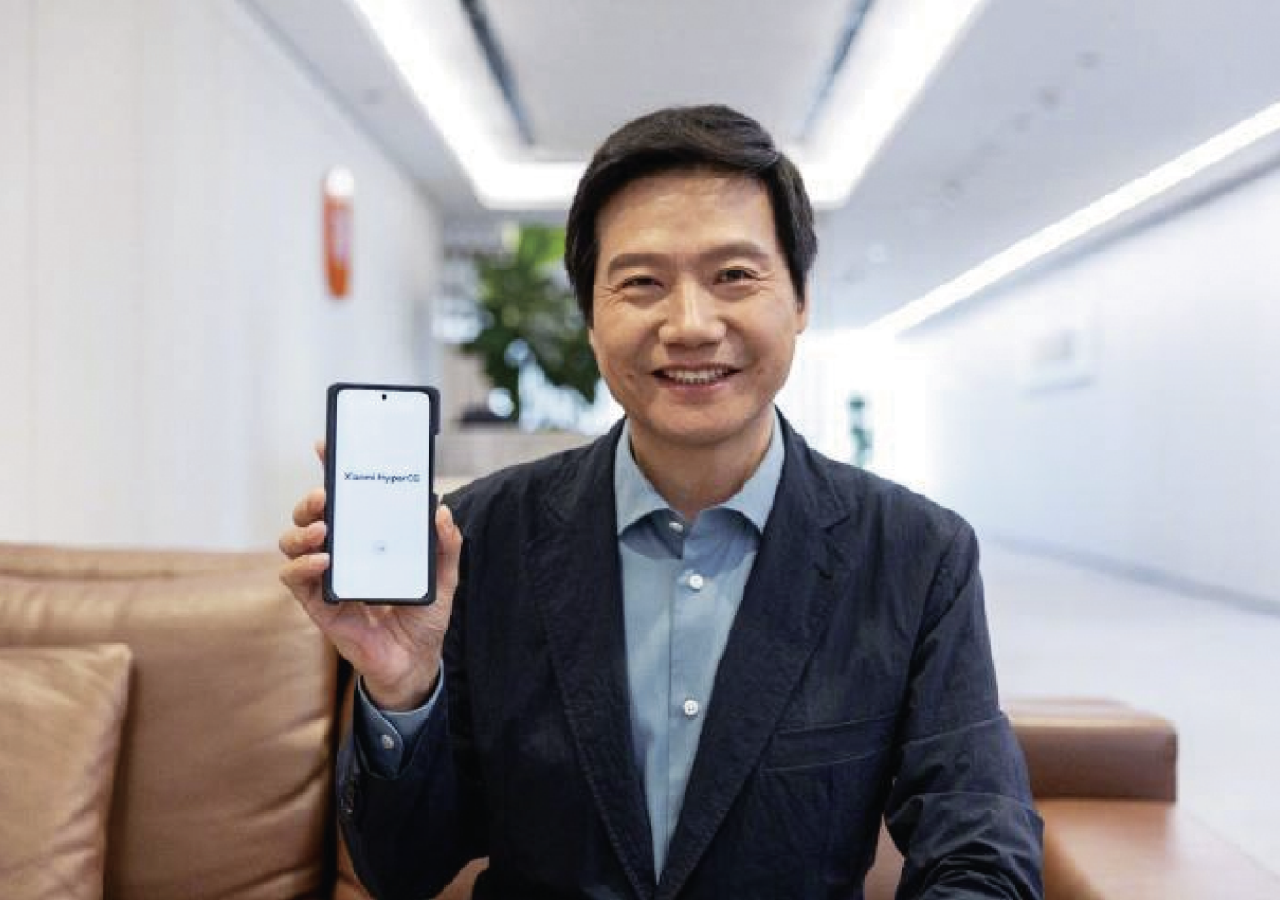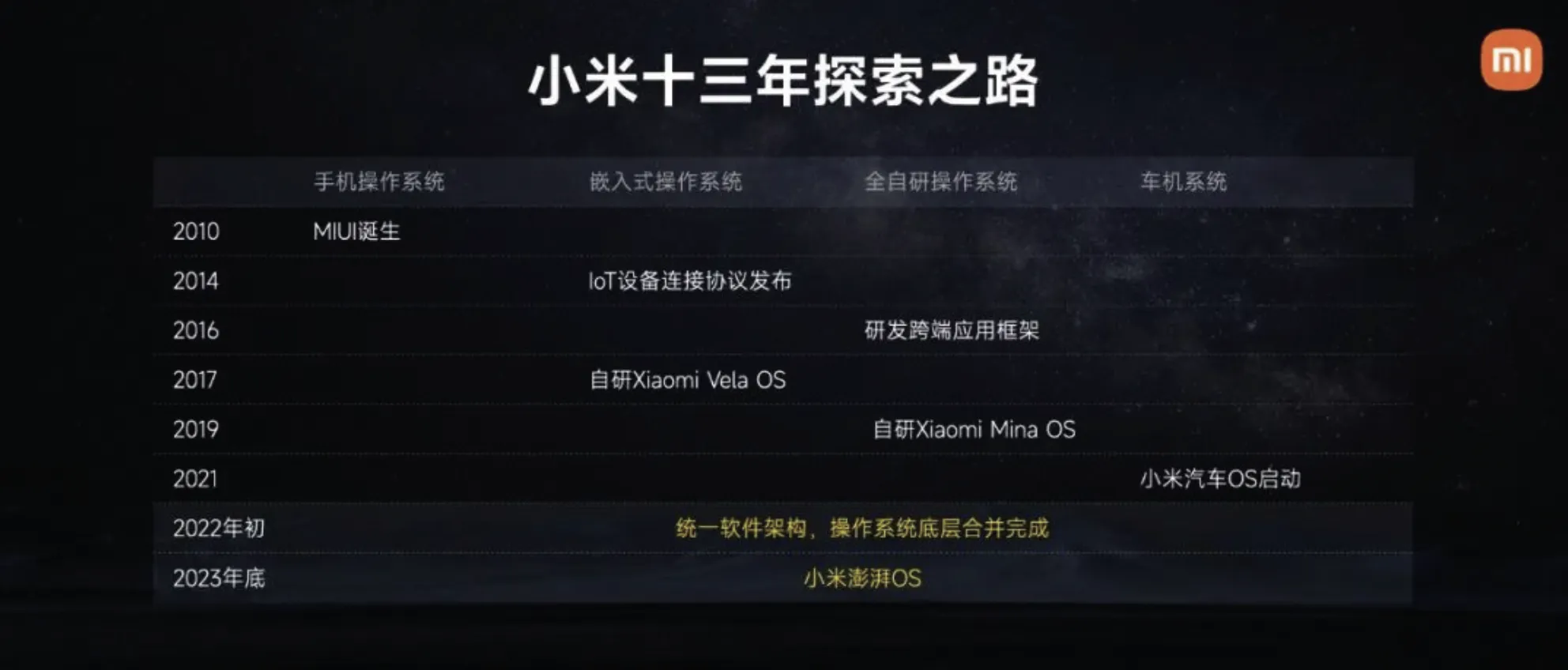


“Today marks a historic moment for Xiaomi as its new operating system, Xiaomi Hyper OS has officially completed packaging." On October 17th, Xiaomi's Chairman and CEO, Lei Jun, announced on social media that Xiaomi Hyper OS is an epoch-making milestone, a key leap towards “Human-Car-Home, All your needs in one smart ecosystem”.
In fact, the discussion on "Human-Car-Home, all your needs in one smart ecosystem" started several years ago. It is widely believed that seamless connectivity and intelligent management of human, car, and home through software and internet technology can significantly enhance the user experience of intelligent vehicles. At present, the ecological competition of the "Internet of Everything" with mobile phones and cars as the entrance has begun Companies like Huawei, Geely, and NIO have accelerated their layout in related industries.
In September of this year, NIO released "Sky OS", the first intelligent electric vehicle operating system developed and released by an automotive company. NIO said that Sky OS has built a 1+4+N technology cluster, covering areas such as vehicle control, intelligent driving, cabin, and mobile internet, and has solved the problem of integration of software, hardware, and services. It is worth mentioning that NIO's first smartphone product, NIO Phone, has also been officially put on sale, with a starting price of 6,499 yuan.
Last year, Geely full-capital buyout of Meizu Technology used its technical strength in the field of mobile operating systems to accelerate the research and development of vehicle systems. At the Meizu Lynk & Co Infinite Ecological Conference in March this year, the new Flyme Auto Human Machine Interface(HMI) was officially released, and the first Lynk & Co 08 equipped with this operating system also made its debut on the same day.
Furthermore, Huawei's Harmony OS, developed earlier, has successfully achieved mass production and completed the ecological closed loop. According to Yu Chengdong, CEO of Huawei Smart Car Solutions, after the release of Harmony OS 4, more than 60 million users upgraded in just over a month, making it the fastest-upgraded version of Harmony OS.
“If you don’t build a mobile phone, it’s like having your car keys in the other person’s hands.” As for the reason for making mobile phones, Li Bin, founder and CEO of NIO said, not because cell phone companies are making cars, not making cars do not make money to rely on cell phones to make money, but NIO users need a mobile phone that can be seamlessly connected with the car to improve the overall intelligent experience.
Previously, Huawei's founder, Ren Zhengfei, highlighted the greatest value of Harmony OS lies in its interoperability among multiple devices. Through the Harmony fieldbus, devices can be combined with each other. It has three important technical features, namely, "Unified OS, Flexible Deployment," "Hardware Mutual Assistance, Resource Sharing," and " Develop Once and Deploy on Multiple Devices." Nowadays, connecting smartphones, cars, and smart home devices has become a major trend in the industry, and the automotive operating system revolution triggered by Huawei is sweeping through the automotive industry.

The Hyper OS may become the core selling point of Xiaomi cars
This may be one of the reasons why Xiaomi chose to develop its own system instead of continuing to use the traditional MIOS. In March 2021, Xiaomi announced its entry into the automotive field and formulated a technology development strategy for full-stack self-developed algorithms. According to the plan, Xiaomi's first mass-produced car model will be officially launched in mass production in 2024.
According to Xiaomi, Xiaomi Hyper OS is not only a mobile phone system, but also a cross-terminal interconnection system. It can not only realize seamless switching and data synchronization between mobile phones, TVs, computers, watches, headphones, and other devices but also realize remote control and voice interaction between mobile phones and smart home devices. More importantly, it can also achieve deep connection and collaboration between mobile phones and cars, allowing users to remotely start, unlock, locate, and monitor the status of the car through their mobile phones. It also seamlessly projects navigation, music, videos, and other content from the phone to the car's screen.
According to Lei Jun, Xiaomi's Hyper OS has already prepared a public base for the Internet of Everything for tens of billions of devices and tens of billions of connections in the future. This means that the positioning of Hyper OS is very similar to Huawei's Harmony OS, and it is very likely that it will be installed on Xiaomi's first mass-produced car model and become one of the core selling points.
According to Lei Jun's blog post, the preparation for Xiaomi's Hyper OS dates back to 2014. At that time, with the initial scale of the IoT business, Xiaomi internally began exploratory development and verification. As the IoT business took the lead, Xiaomi's research and development of embedded systems has become more and more in-depth. In order to solve the fragmentation and connection gap of device systems in IoT networks, Xiaomi released a connection protocol for IoT devices in 2014.
In 2017, Xiaomi’s self-developed VelaoS was officially released. To adapt flexibly to various smart hardware products, VelaOS achieved scalability and adaptability, supporting a wide range of devices from simple to complex. It gradually unified the IoT device ecosystem, and the installed base has now exceeded 20 million units.
It is not difficult to find from the currently exposed information about Hyper OS that its design ideas are very closely with Xiaomi’s current ecosystem. Lei Jun pointed out that Xiaomi's Hyper OS is based on " deeply evolved Android and the self-developed Vela system, completely rewriting the underlying architecture." At present, Xiaomi already has a huge ecosystem, with the Mi Home ecosystem covering various IoT categories such as security, lighting, cleaning, kitchen, bathroom, environment, and network. Therefore, providing users with a better adaptation experience has undoubtedly become a necessary way to solve user pain points.
However, at the same time, how relevant manufacturers balance the relationships between platforms, developers, and users, ensuring the healthy and sustainable development of their software ecosystem, is also a crucial point to focus on. After developing its own operating system, how they continuously optimize existing products, and plan for the future of their ecosystem could be a key factor for success.